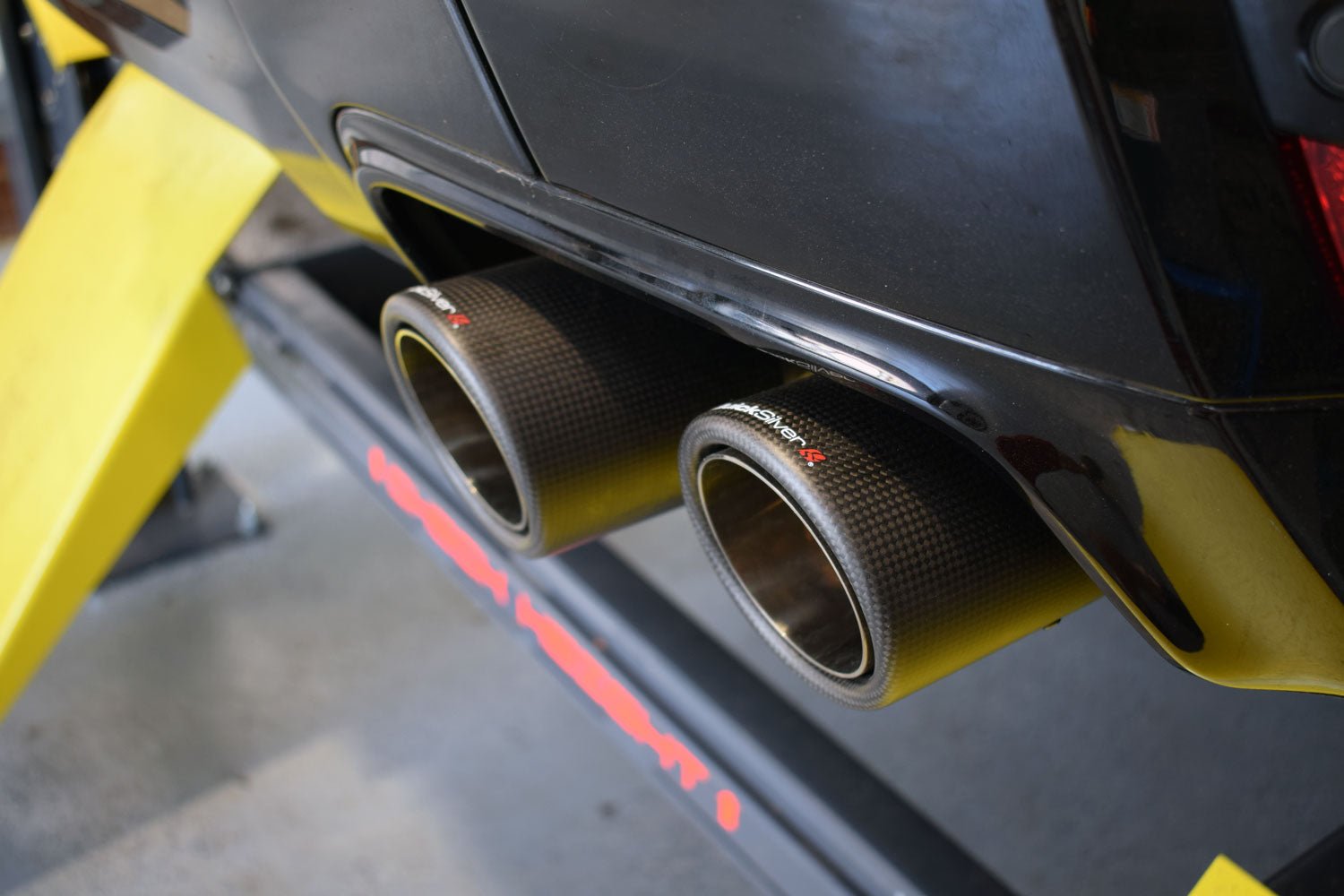The Environmental Impacts of a Malfunctioning Exhaust
When an exhaust system malfunctions, it can have serious environmental consequences. Your car’s exhaust system is designed to guide harmful gases away from the engine and ultimately out of the vehicle. However, when it doesn’t work properly, the results can be detrimental to both the environment and public health.
One major issue with a malfunctioning exhaust system is the increase in harmful emissions. Vehicles are designed to emit specific levels of pollutants, including nitrogen oxides (NOx), carbon monoxide (CO), and particulate matter (PM). When the exhaust system fails, these emissions can rise significantly. This isn’t just bad for air quality; it’s a significant contributor to smog and global warming. You might ask yourself, what can I do to reduce my carbon footprint? Regular vehicle maintenance is essential to keep emissions within legal limits.
Another aspect to consider is the impact on public health. The pollutants mentioned earlier can lead to respiratory issues, cardiovascular diseases, and other serious health problems. Children, the elderly, and those with pre-existing health conditions are particularly vulnerable. If you notice an increase in smoke or a strange smell from your vehicle, it’s wise to get your exhaust system checked. Not only can this help the environment, but it can also protect the health of those around you.
A poorly functioning exhaust can also affect climate change. Carbon dioxide (CO2) is a greenhouse gas that contributes to global warming. Vehicles with malfunctioning exhaust systems may release extra CO2, exacerbating climate issues. As the planet continues to warm, we all feel the effects—unusual weather patterns, extreme heat, and rising sea levels are just a few consequences. By ensuring your exhaust system works properly, you contribute to the fight against climate change.
This situation can also lead to engine inefficiency. If your exhaust system is not operating effectively, your engine has to work harder. This can lead to higher fuel consumption. Not only does this waste precious natural resources, but it also increases the amount of CO2 released into the atmosphere. You may not realize it, but the simple act of taking care of your vehicle can reduce emissions and save you money on fuel in the long run.
Addressing exhaust system malfunctions involves understanding common signs. Here are a few key indicators to watch for:
- Visual Smoke: Black or blue smoke coming from the exhaust can indicate issues.
- Increased Noise: A loud exhaust can mean that there’s a leak or a crack.
- Check Engine Light: If this light appears, it’s essential to investigate.
- Poor Fuel Economy: If you notice a drop in mileage, consider checking the exhaust system.
As you consider your vehicle maintenance strategy, don’t ignore the exhaust system. By addressing these issues promptly, you can significantly reduce your car’s environmental impact. Furthermore, being proactive can help you avoid expensive repairs later on.
Local governments often impose regulations on vehicle emissions in a bid to control air quality. If your car fails to meet these standards due to a faulty exhaust, you might face fines or restrictions on driving in certain areas. Staying informed about local emission laws can save you headaches down the road.
In addition, consider the wider implications of vehicle emissions. Many urban areas are already struggling with poor air quality, and your car’s emissions contribute to this issue. By keeping your vehicle in good shape, you’re not just complying with regulations—you’re taking part in a broader effort to improve air quality in your community.
It’s clear that a malfunctioning exhaust has far-reaching environmental impacts. From increased harmful emissions to negative effects on public health, the risks are significant. Regular vehicle maintenance, including checking the exhaust system, is essential for minimizing your environmental footprint. By taking these small steps, you’re helping to ensure a cleaner, healthier planet for future generations.
Remember, vehicle care isn’t solely about what happens under the hood; it’s about the world outside your windows as well. Your choices matter, and making the right decisions can lead to positive changes both for you and the environment.
Common Signs of Exhaust System Failure
Your vehicle’s exhaust system plays a crucial role in ensuring efficient engine performance and reducing harmful emissions. Over time, wear and tear can take a toll, leading to exhaust system failure. Recognizing the common signs of exhaust system failure can help you address issues early, ensuring both your safety and the environment’s health.
One of the most noticeable symptoms of exhaust system trouble is unusual noise. If you hear loud rumbling sounds when your car is running, it may indicate a leak or damage in the exhaust. This noise often becomes more pronounced during acceleration. The exhaust system should operate quietly, so any significant increase in noise is a sign that something is wrong.
Another common sign is a decrease in fuel efficiency. If you’ve noticed that you’re filling up your tank more often than usual, it may be due to a malfunctioning exhaust system. When the exhaust system is not working properly, it can cause the engine to work harder, leading to higher fuel consumption. You might also experience a loss of power when driving, making it harder to accelerate or maintain speed.
Pay attention to strange smells as well. A malfunctioning exhaust can cause exhaust fumes to enter the cabin of your vehicle. If you notice a strong odor of gasoline or rotten eggs, it can indicate issues with your exhaust system. These smells can be dangerous, leading to health risks if inhaled over time.
Another aspect to consider is the appearance of rust or damage. Regularly inspecting your exhaust system can help you spot potential problems early. Look for signs of corrosion, holes, or cracks in the pipes and components. Damage can allow gases to escape, creating both safety concerns and environmental hazards.
Here are some common signs to look out for:
- Loud noises: Increased noise, especially during acceleration.
- Poor fuel efficiency: Frequent refueling and decreased miles per gallon.
- Strange odors: Unpleasant smells, including strong fumes.
- Visual damage: Rust, holes, or cracks in exhaust components.
- Check engine light: An illuminated warning light on your dashboard.
The check engine light may also flicker on your dashboard as an indicator of an exhaust problem. Modern vehicles are equipped with sensors that monitor various components, including the exhaust system. If any sensors detect abnormal readings, the check engine light will illuminate, signaling that a professional inspection is needed.
Additionally, you may experience symptoms related to the vehicle’s performance. A malfunctioning exhaust system can lead to poor acceleration or difficulty maintaining speed on hills. If you find your car struggling during routine driving conditions, it could be due to exhaust issues. This not only affects your driving experience but also puts stress on the engine.
Driving with a faulty exhaust system isn’t just an inconvenience; it can also lead to severe repercussions. The emissions from a damaged exhaust can contribute to air pollution, releasing harmful substances into the atmosphere. Addressing exhaust problems quickly not only protects your vehicle but also the environment.
To summarize, staying vigilant and recognizing the signs of exhaust system failure can save you from costly repairs down the line. Regular maintenance checks and prompt attention to any symptoms can significantly extend the life of your vehicle’s exhaust system. If you encounter any of these signs, it is advisable to seek a mechanic’s expertise before the issue escalates.
By being proactive, you not only enhance your vehicle’s performance but also contribute positively to the environment. Awareness of these common signs is the first step in ensuring that your exhaust system functions efficiently and responsibly.
How Exhaust Emissions Affect Air Quality
Exhaust emissions from vehicles and industrial sources release harmful pollutants into the atmosphere, significantly impacting air quality. These emissions primarily consist of carbon monoxide, nitrogen oxides, particulate matter, and volatile organic compounds. Understanding how these compounds affect the air we breathe is crucial for our health and the environment.
Major Components of Exhaust Emissions
The emissions from exhaust systems can lead to various air quality issues. Here are the main components that contribute to this problem:
- Carbon Monoxide (CO): A colorless, odorless gas that can reduce the blood’s ability to carry oxygen. High levels can lead to serious health problems.
- Nitrogen Oxides (NOx): These gases contribute to the formation of smog and respiratory problems, particularly in children and the elderly.
- Particulate Matter (PM): Tiny particles that can penetrate deep into the lungs, causing cardiovascular and respiratory diseases.
- Volatile Organic Compounds (VOCs): These can lead to the formation of ground-level ozone, a key component of smog that affects lung function.
The Link Between Exhaust Emissions and Air Quality
When vehicles and machines release exhaust, these pollutants mix with the atmosphere. This can degrade air quality in several ways:
- Formation of Ground-Level Ozone: VOCs and NOx react in sunlight, creating ozone. While ozone high up in the atmosphere protects us from the sun’s UV rays, ground-level ozone can cause breathing difficulties and exacerbate asthma.
- Smog Development: Smog is a mixture of air pollutants, including ground-level ozone and particulate matter. High levels of smog can create hazardous living conditions and reduce visibility.
- Acid Rain: NOx and sulfur dioxide can lead to acid rain, which harms water bodies, soils, and vegetation, disrupting entire ecosystems.
Health Risks Associated with Poor Air Quality
Poor air quality affects everyone, but some groups are more vulnerable. Children, the elderly, and individuals with pre-existing health conditions are particularly at risk. Long-term exposure to polluted air can lead to serious health issues, including:
- Respiratory Diseases: Conditions like asthma and chronic obstructive pulmonary disease (COPD) can be aggravated by poor air quality.
- Cardiovascular Problems: Studies show that air pollution can increase the risk of heart attacks and strokes.
- Neurological Effects: Emerging research suggests a link between air pollution and cognitive decline, affecting mental health and cognitive abilities.
Environmental Consequences
The effects of exhaust emissions extend beyond human health; they also impact our planet. Key environmental consequences include:
- Climate Change: Pollutants like CO2 from vehicle emissions are significant contributors to greenhouse gas emissions, driving climate change.
- Habitat Destruction: Acid rain damages forests and aquatic ecosystems, altering habitats and threatening wildlife.
- Impact on Agriculture: Poor air quality can harm crops and reduce yield, affecting food supply and economy.
Mitigating Exhaust Emissions
Everyone has a role to play in improving air quality. Here are some actionable strategies you can adopt:
- Use Public Transportation: Reducing the number of vehicles on the road lessens emissions significantly.
- Carpool: Share rides with others to decrease the number of cars in use.
- Regular Vehicle Maintenance: Keeping your vehicle in good condition can reduce emissions and improve its efficiency.
- Opt for Cleaner Energy:** Consider using electric or hybrid vehicles that produce fewer emissions.
The impacts of exhaust emissions on air quality are profound, affecting both health and the environment. By understanding the implications and taking actionable steps, you can contribute to cleaner air and a healthier planet. Small changes in daily habits can lead to significant improvements over time, making a difference for you and future generations.
The Role of Regular Maintenance in Preventing Exhaust Issues
Keeping your vehicle in good shape involves more than just regular oil changes or tire rotations. One crucial aspect that often gets overlooked is the exhaust system. Regular maintenance plays a vital role in preventing exhaust issues that can lead to serious environmental problems and costly repairs. Here’s how properly maintaining your exhaust system can help you and the planet.
The Importance of the Exhaust System
Your vehicle’s exhaust system is responsible for channeling harmful gases away from the engine and into the atmosphere. The exhaust contains pollutants like carbon monoxide, nitrogen oxides, and particulates that can significantly impact air quality. A properly functioning exhaust system helps reduce these emissions, promoting a cleaner environment.
How Regular Maintenance Helps
Frequent inspections of your exhaust system can help identify problems before they escalate. Here are some aspects you should consider when maintaining your exhaust:
- Visual Inspections: Regularly check for rust, dents, or cracks in the exhaust components. Even small issues can lead to larger problems if not addressed.
- Check for Leaks: Look for any signs of hissing or tapping sounds when the engine is running. These noises can indicate a leak, which requires immediate attention.
- Inspect the Catalytic Converter: This part of the exhaust system helps reduce harmful emissions. If you notice a loss of power or an unusual smell, it may be clogged or malfunctioning.
- Monitor Engine Performance: Pay attention to how your vehicle runs. If you notice any changes, it could be a sign of exhaust issues that need further investigation.
Benefits of Preventative Maintenance
By performing regular maintenance on your exhaust system, you not only save money but also contribute to a healthier environment. Here are some key benefits:
- Cost Savings: Early detection of issues can prevent costly repairs. Fixing a small leak is much cheaper than replacing a whole exhaust system.
- Improved Fuel Efficiency: A well-functioning exhaust allows your engine to operate more efficiently, which can lead to better fuel economy and less frequent visits to the gas station.
- Reduced Emissions: Regular maintenance ensures that your car complies with environmental standards, helping to reduce your carbon footprint.
- Enhanced Performance: When your exhaust system is in good shape, your vehicle performs better, providing a smoother and more enjoyable driving experience.
Signs Your Exhaust Needs Attention
Being aware of warning signs can help you address exhaust issues promptly. Here are some symptoms that indicate you should consider immediate maintenance:
- Strange Noises: Unusual sounds like rumbling or hissing are often signs of exhaust problems.
- Bad Smell: The presence of strong fumes or a rotten egg smell can indicate a malfunctioning catalytic converter.
- Check Engine Light: If the check engine light illuminates, don’t ignore it! It could indicate a problem with your exhaust system.
- Poor Acceleration: If your car hesitates or shows sluggish acceleration, it may be due to exhaust issues affecting engine performance.
How to Maintain Your Exhaust System
To ensure your exhaust system remains in optimal condition, consider these maintenance tips:
- Have a professional mechanic perform regular checks on your exhaust and emissions systems.
- Replace faulty parts immediately to prevent further damage and enhance safety.
- Wash the undercarriage of your car regularly to remove corrosive elements that may affect the exhaust system.
- Keep an eye on your fuel consumption; inconsistencies might signal exhaust issues.
Understanding the significance of regular maintenance for your vehicle’s exhaust system can make a big difference. Not only does it save you money, but it also contributes to a healthier environment. By being proactive, you can ensure your vehicle runs smoothly and efficiently while minimizing its impact on the planet.
Solutions for Reducing Exhaust-Related Pollution
Vehicle emissions pose significant threats to our environment, impacting air quality and contributing to climate change. However, there are practical solutions you can implement to help reduce exhaust-related pollution. Understanding these solutions is crucial for both individuals and communities aiming for a healthier planet.
Adopting Cleaner Technologies
One of the most effective ways to curb exhaust-related pollution involves adopting cleaner vehicle technologies. These innovations not only reduce harmful emissions but also improve fuel efficiency. Here are a few options you might consider:
- Electric Vehicles (EVs): Shifting from conventional petrol or diesel cars to electric vehicles significantly lowers tailpipe emissions. EVs produce zero exhaust emissions and help minimize air pollution in urban areas.
- Hybrid Vehicles: If fully electric options aren’t feasible for you, consider hybrids. They combine an internal combustion engine with an electric motor, leading to lower fuel consumption and reduced emissions.
- Alternative Fuels: Look into vehicles that run on biofuels, hydrogen, or compressed natural gas (CNG). These alternatives tend to emit fewer pollutants compared to traditional fuels.
Regular Vehicle Maintenance
Ensuring your vehicle is in optimal condition can drastically minimize exhaust emissions. Here are some maintenance tips to follow:
- Routine Inspections: Regularly check for leaks in the exhaust system and ensure that your emission control systems are functioning correctly. A malfunctioning exhaust can release harmful substances into the atmosphere.
- Oil Changes: Frequent oil changes help keep your engine clean and can improve its overall performance, lowering exhaust output.
- Replace Air Filters: A clean air filter helps your engine run more efficiently, reducing fuel consumption and emissions.
Driving Habits Influence Emissions
Your driving style can either contribute to or reduce pollution levels. Here’s how to adopt eco-friendly driving habits:
- Drive Smoothly: Avoid rapid acceleration and hard braking. Smooth driving reduces fuel consumption and, consequently, exhaust emissions.
- Limit Idling: Turn off your engine when parked or waiting. Idling for extended periods wastes fuel and increases pollution.
- Carpool or Use Public Transport: Reducing the number of vehicles on the road can decrease overall emissions. Whenever possible, share rides or utilize public transport systems.
Promoting Sustainable Transportation
Supporting community initiatives that encourage sustainable transportation can create large-scale impacts. Here are ways to promote greener options in your community:
- Advocating for Public Transport: Support and use public transport systems. Advocate for increased access and improvement in service to encourage more people to hop on board.
- Encouraging Cycling and Walking: Develop safe bike lanes and pedestrian pathways to make cycling and walking more appealing. This encourages more people to leave their cars at home, thus reducing emissions.
- Participate in Local Environmental Initiatives: Join or support local drives aimed at reducing air pollution through tree planting or clean-up events. These initiatives can foster awareness and promote collective action.
Regulatory Changes and Incentives
Government policies play a significant role in reducing exhaust-related pollution. Stay informed and engaged with local and national regulations that aim to minimize vehicle emissions. Here are impactful actions:
- Support Emission Standards: Advocate for stricter emissions standards for vehicles to push manufacturers towards cleaner technologies.
- Incentives for Clean Energy: Take advantage of tax breaks or rebates for purchasing cleaner vehicles or retrofitting your existing vehicle for better fuel efficiency.
Ultimately, reducing exhaust-related pollution requires a combination of personal responsibility, community engagement, and government support. By implementing these solutions, you can contribute to a healthier environment and combat climate change effectively.
Conclusion
Understanding the environmental impacts of a malfunctioning exhaust system is crucial for everyone who drives. When your exhaust fails, it releases harmful emissions that can significantly degrade air quality and contribute to respiratory issues in humans and animals alike. Recognizing the common signs of exhaust system failure, such as unusual noises, decreased fuel efficiency, and increased vibrations, allows you to take action early, preventing further damage and environmental harm.
Regular maintenance plays a pivotal role in ensuring the longevity and efficiency of your exhaust system. Routine checks can help identify potential problems before they escalate, keeping both your vehicle and the environment safer. Moreover, implementing solutions such as installing catalytic converters, upgrading to cleaner fuels, and following best practices for driving can significantly reduce exhaust-related pollution.
Being proactive not only enhances your driving experience but also protects the planet. By being aware of exhaust issues and their consequences, you can take the necessary steps to address them. Enhanced air quality benefits everyone, making our communities healthier and more vibrant. By prioritizing your vehicle’s exhaust system maintenance and looking for ways to minimize emissions, you contribute positively to the environment and help create a better world for future generations. Make the commitment today for both your vehicle’s performance and the health of our planet.





